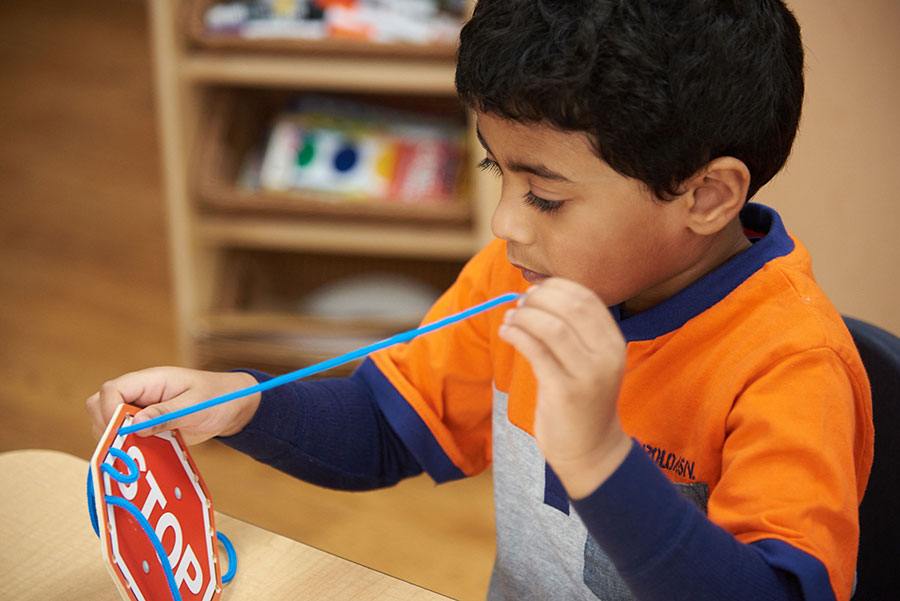From infancy to school-age and beyond, sleep hygiene remains critical to your child’s neurological and cognitive development.
As parents and babysitters alike know—and all too well—nothing sparks evasive behavior, tantrums and bothersome wheedling quite like the words, “It’s bedtime.” Contrary to the sometimes Oscar-worthy performances of young ones seeking to eke out “just five more minutes,” however, nothing could be more integral to healthy childhood development than sleep.
According to the National Sleep Foundation, sleep drives the primary neural activity of early childhood development—but it takes the establishment of circadian rhythms, or the body’s natural sleeping-and-waking cycle, to really kick off. As baby’s age from newborns to infants in the first four months of life, their internal clocks begin to regulate. In order to promote the establishment of healthy rhythms and your child’s cognitive development, caretakers need look no further than these tips and tricks for dreamy nights in lieu of nightmarish bedtime routines.
Infancy (4–11 months)
“When infants are put to bed drowsy but not asleep, they are more likely to become ‘self- soothers’’, which enables them to fall asleep independently at bedtime and put themselves back to sleep during the night,” says the National Sleep Foundation. Kim West, LCSW-C—also known as “The Sleep Lady,” calls this approach “the cornerstone of successful sleep training.” This means that parents should place their little one in the crib when they’re drowsy but still awake.
“At around four to six-months-old, babies begin to develop their internal clock,” shares West. “They begin to produce melatonin, the sleep hormone. Melatonin is triggered by sleep cues like darkness at night, and bedtime routines.” Placing your baby in a darkened room while they’re calm helps condition the brain to produce melatonin as night falls and also promotes self-soothing.
Toddler (1–2 years)
“Thirty minutes to an hour before bedtime, start a calming ritual that may include giving a bath and reading a story or two,” suggests Parents.com. Consistency aids in the further cultivation of healthy circadian rhythms and the prelude to actual lights-out provides your young child’s active mind time to wind down.
“Children thrive on routine,” writes West for Pampers. “When a young child knows what to expect, they feel secure.” A sense of security not only lessens the chance of middle-of-the-night fussing, but also helps in the establishment of a secure attachment bond between parent and child.
Preschoolers (3–5 years)
According to The Sleep Foundation, “preschoolers typically sleep 11–13 hours each night and most do not nap after five years of age.” For parents and caretakers, this may sound enthusing…except that, like toddlers, still-developing self-regulation systems mean that “difficulty falling asleep and waking up during the night are common,” for preschool-age children, according to The Sleep Foundation.
The fix? Routine, routine, routine.
According to KidsHealth, practices like “winding-down period during the half hour before bedtime” and “keep[ing] consistent playtimes and mealtimes” are key ways to promote your little one’s sleep.
Other top tips from the site include using the bed “only for sleeping—not for playing or watching TV” and allowing your child to “choose which pajamas to wear, which stuffed animal to take to bed, etc.”, as this reaffirms that the bedroom is a safe, quiet space where the child can relax.
Primary school-aged children (6–13 years)
In our digital age, it’s especially tempting to allow computers, smartphones, TVs and other devices into your child’s room—but this can seriously disrupt their natural sleep patterns and translate to lower quality sleep, which in turn contributes to cognitive impairment and poor performance in school.
Avoid technology’s overstimulating effects by keeping your child’s room cool, dark and device-free. If necessary, go the route of The Parent Cue and nix the option for nighttime browsing by changing the wifi password an hour before bedtime.
Again, routine and a consistent bedtime are your friends. Even when the bedtime theatrics set in, remember that routines cultivate a sense of security and self-discipline—both critical to healthy development.






